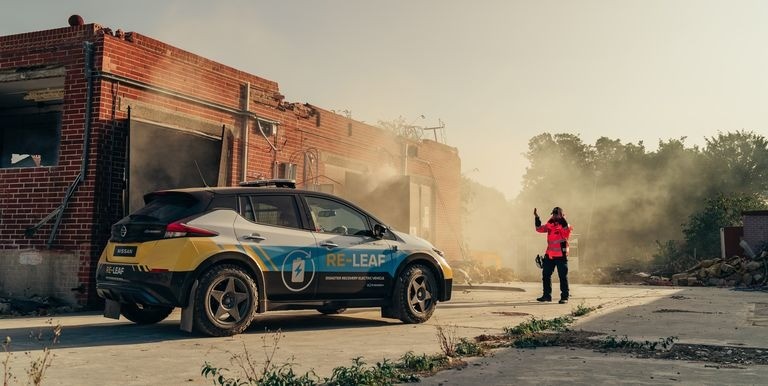Nissan Leaf Turns into Disaster-Response Vehicle
The RE-LEAF concept gets the safari treatment, along with the ability to provide emergency power during outages...

Nissan Leaf Turns into Disaster-Response Vehicle
The RE-LEAF concept gets the safari treatment, along with the ability to provide emergency power during outages.
- What to drive to the apocalypse? Maybe, surprisingly, a Nissan Leaf EV.
- Nissan created this RE-LEAF emergency-response vehicle in the U.K. using the Leaf E+.
- It's modified to serve as a mobile generator and could power an average British household for six days, Nissan says. It'd also make a great #vanlife vehicle.
The U.K. might not seem like a real hot spot for natural disasters, but that didn't stop Nissan from preparing for one with the new RE-LEAF concept. So when the Viking hordes row down from darkest Scandinavia or a Scottish peat bog catches fire in a big way, you know how to spell "relief." And it's not the correct way, but we get the point.
To create the RE-LEAF, Nissan took a Leaf E+ (the U.S.-market Plus), which has a 62.0-kWh battery, and fitted it with exterior-mounted power outlets so it can serve as a mobile generator. Nissan figures that running an ICU medical ventilator for 24 hours would only use about 5 percent of the car's capacity and that a fully charged Leaf could power the average British household for about six days. Or, in our case, maybe three days, once we fire up our industrial-size blenders for Blackout Margaritas.
In Japan, Leaf EVs have always been able to push power back to your house through vehicle-to-grid technology. And in fact, our Leaf has the hardware to do that, but Nissan hasn't yet solved the home side of the equation, what with our pesky patchwork of electric utilities. But plug in some extension cords? That seems feasible. Get on that, Nissan.
We also dig the RE-LEAF's all-terrain mods, which are ostensibly to help it navigate the detritus of post-disaster roads but also make it look way cooler than a normal Leaf. The concept gets the safari treatment with a 2.8-inch lift, skid plates, BFGoodrich Baja All Terrain tires on Compomotive wheels, a wider track with fender flares, and some sweet mud flaps. Ground clearance is 8.9 inches. The rear seats are removed to make more room for gear.
Basically, Nissan accidentally built a Leaf for overlanding. Think about it—with extra storage, minor off-road talent, and off-the-grid power capability, the RE-LEAF would make a fine base camp for #vanlife adventures that don't stray too far from civilization (or at least a charger). As a disaster-response vehicle, that could work, too. As long as you get a chance to charge up first.